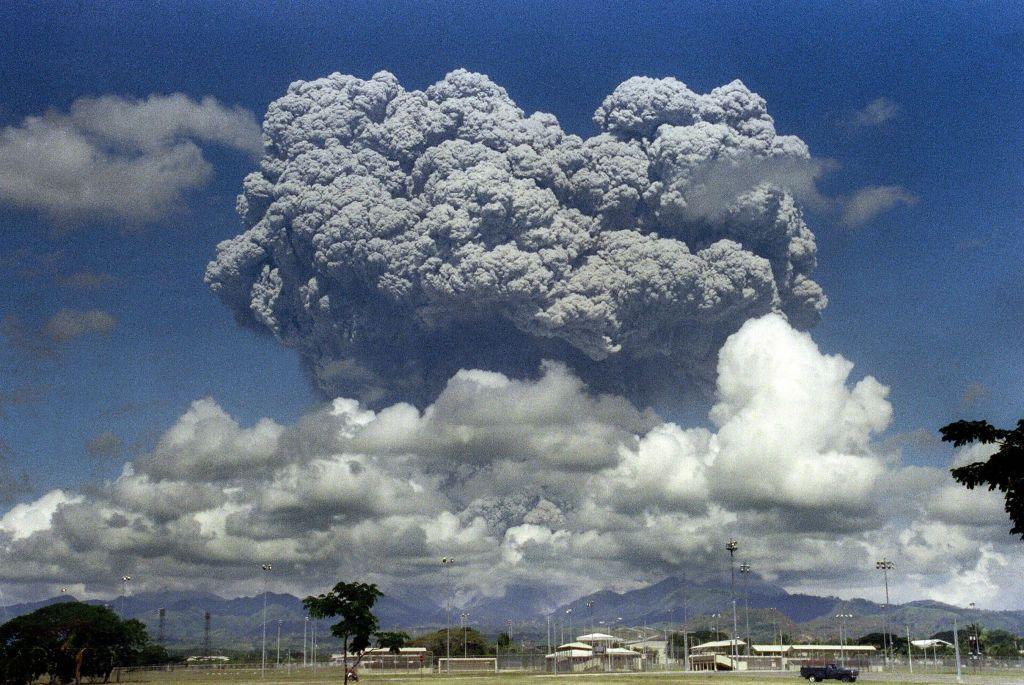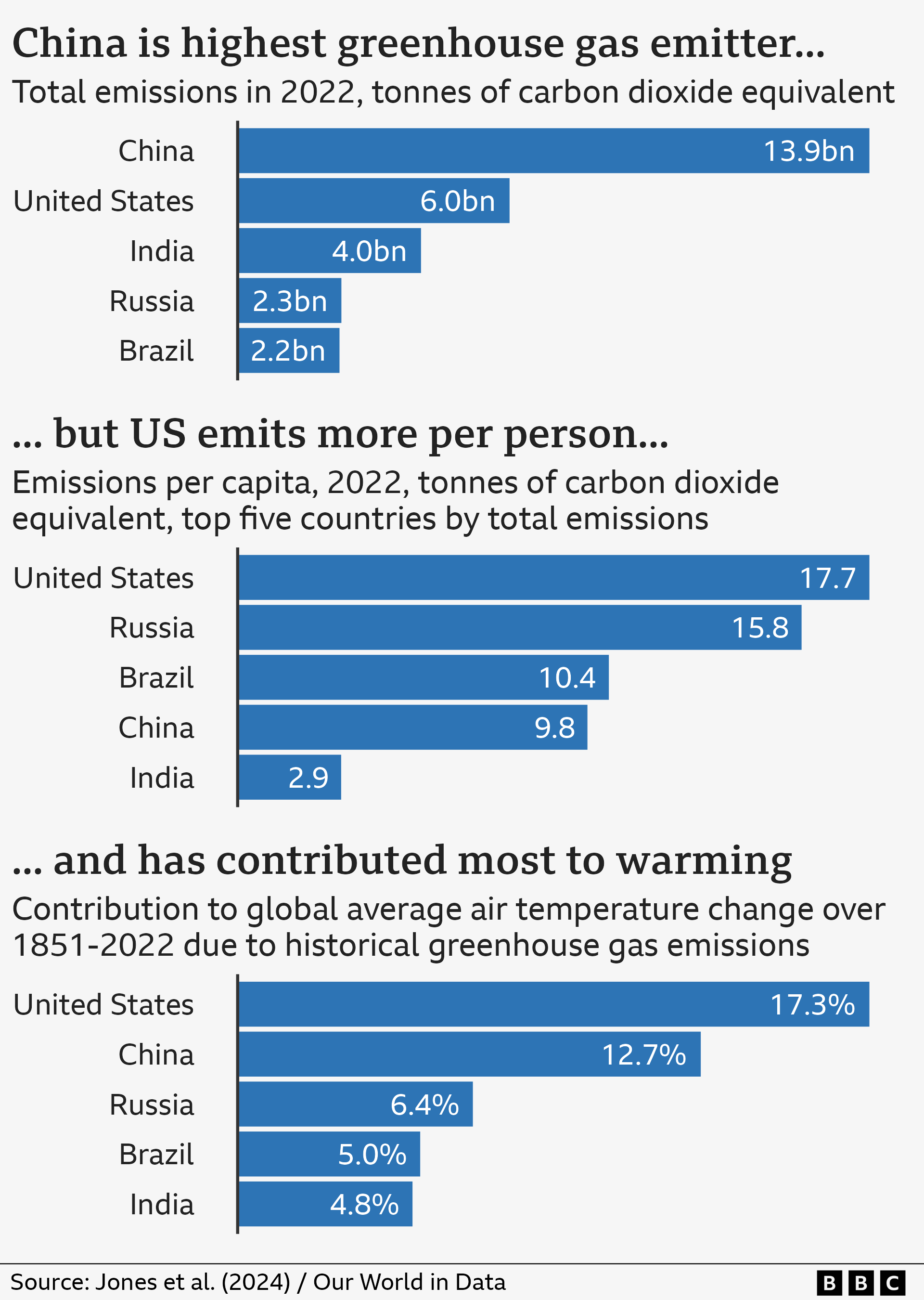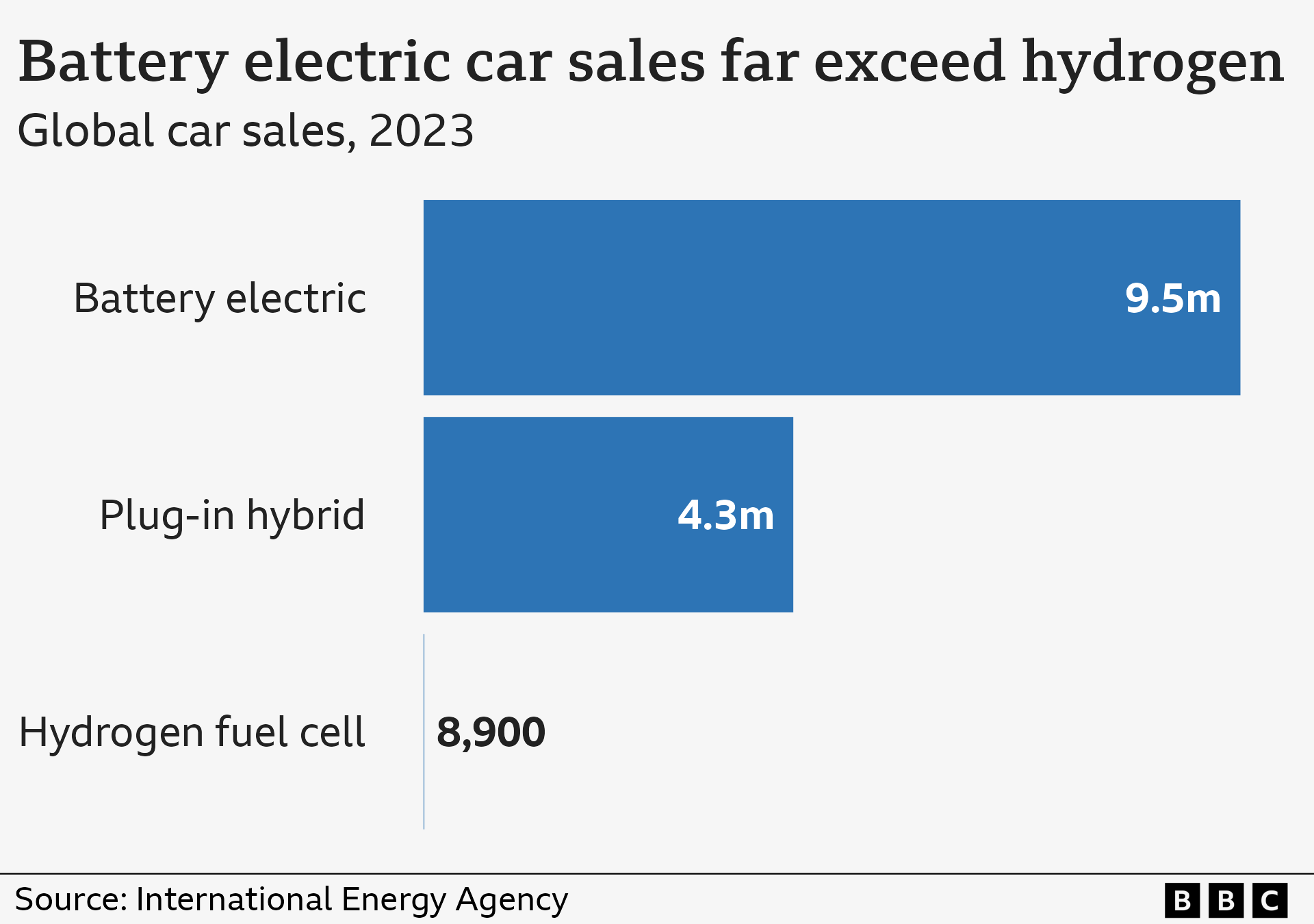Climate Q&A: Population, volcanoes and electric cars

- Published
The BBC’s Future Earth newsletter, with Justin Rowlatt, brings the latest news on climate and the environment to your inbox every week.
We also answer questions from our readers, on topics ranging from carbon emissions and clean technologies to volcanic activity and the impact of war on climate change.
We’ve compiled some of our favourite questions and answers so far below.
If you’re in the UK and want to sign up for the newsletter, you can do that here. If you're outside the UK, sign up here.
How has the Ukraine war affected efforts to tackle climate change?
First and foremost, the war in Ukraine has been a humanitarian disaster. But it has also had implications for the climate.
There are extra greenhouse gas emissions associated with war itself, such as warfare materials, fires triggered by the conflict, and rebuilding of destroyed infrastructure.
The damage also greatly hampers efforts for Ukraine to prepare itself for extreme weather events, potentially making the impacts of climate change on the country even worse.
But there have been consequences for global energy trends too.
After Russia invaded in February 2022, energy prices spiked and many Western countries pledged to wean themselves off Russian gas.
In some countries this has led to a sharper focus on deploying renewables, external and reducing reliance on fossil fuels, in a bid to enhance long-term energy security.
But to replace gas piped in from Russia in the shorter term, some countries have also begun expanding infrastructure to ship in liquified natural gas from other parts of the world.
Liquified natural gas is often far more carbon-intensive than piped gas, because of the energy required to compress the gas into liquid form and transport it.
How are volcanic eruptions influencing our weather?
Volcanic eruptions can have significant effects on the global climate. One of the most famous cases is Mount Pinatubo in the Philippines, external, which erupted in 1991.
It released nearly 20 million tonnes of sulphur dioxide into the stratosphere, which formed sulphate aerosols.
These tiny particles reflected some of the Sun’s energy back into space, cooling the planet by an estimated 0.5C over the following two years or so.

The eruption of Mount Pinatubo in 1991 temporarily cooled the Earth
When it comes to long-term warming, human activities are unquestionably to blame. Natural factors such as volcanic eruptions made effectively no difference, external to global temperatures averaged over the past decade.
There has been much speculation about the massive eruption of the underwater Hunga Tonga volcano at the start of 2022.
But it is thought that it had at most a minor effect on global temperatures, and certainly cannot explain the record temperatures of 2023.
Which countries are the biggest emitters of greenhouse gases?
China is currently the biggest emitter of greenhouse gases per year, at nearly 14 billion tonnes of carbon dioxide (CO2) equivalent in 2022, external.
That is more than double the next highest, the US, at six billion.
But when you consider emissions per head of the population, the picture is reversed.
The US emitted 17.7 tonnes of CO2-equivalent per head in 2022, external, comfortably ahead of China, at 9.8 tonnes. (Actually, countries such as Qatar, which produce large amounts of oil and gas relative to their population size, are at the top of that list.)
It is also worth considering historical emissions, as greenhouse gases (especially CO2) stay in the atmosphere for a long time.
Since 1850, the US also comes out on top, external – responsible for about 17.3% of warming – with China next on 12.7%. The UK is in eighth place on 2.4%.

What are the impacts of wood-burning stoves on air quality?
UK emissions of tiny health-harming airborne particles, external have fallen considerably since the 1970s, external. But improvements have slowed over the last decade, despite reductions from cars and other sources.
The recent increase in wood burning in homes and industry is a key factor in this, according to the Department for Environment, Food and Rural Affairs, external.
Wood-burning stoves generate much higher levels of particle pollutio, externaln than a gas boiler or electric heat pump.
As wood burns, it releases tiny particles which can stay in the atmosphere for a few days and drift in the wind. This means that wood burning can affect outdoor air quality over large areas. Wood-burning stoves can also worsen air quality within the home, external, particularly when the stove door is opened.
The particle pollution from any given stove can vary significantly, external though, depending on its design and how it is used. Wet wood is much more polluting than dry wood, for example.
What is the impact of aircraft flying on climate change?
Aviation is responsible for roughly 4% of all human-caused warming, external.
Perhaps the most obvious effect on the climate is that burning jet fuel releases planet-warming gases like CO2. Flying generally emits much more CO2 per passenger than train travel, for example.
A large proportion of warming from aviation actually comes from the effects of contrails. These are the wispy white lines you might see left behind a plane in the sky, formed as water vapour from jet engines condenses and freezes.

Condensation trails, or "contrails", add to the warming effects of aeroplanes
There is an aspirational global target to reach net zero greenhouse gas emissions from aviation by 2050.
But reducing the climate impact of flying is going to be very difficult. There are currently no widely available alternatives to traditional jet fuels.
Aviation groups hope that new, cleaner technologies will come good. But many scientists warn that flying less is the only sure-fire way to get emissions down.
Why aren't hydrogen cars being considered as alternatives to electric vehicles (EVs)? What about fire risks and the weight of EVs?
Electric vehicle (EV) sales are currently far ahead of hydrogen-powered vehicles.
In 2023, around 9.5 million battery electric cars, external were sold worldwide. The number of hydrogen-powered cars sold was around 1,000 times smaller, and actually fell compared with 2022.

Not only are hydrogen cars very expensive, the infrastructure is also lacking. The hydrogen economy is in its very early stages – and most hydrogen production currently comes from fossil fuels, so is not “clean”.
While there are clearly challenges of upgrading the electricity grid to cope with demand of EVs – and installing charging points – this is seen as much more realistic, at least in the short-term.
Hydrogen might have a role to play in future, for example in heavy-duty vehicles. But the current evidence strongly suggests that EVs will play the main role in decarbonising transport.
As for the question about fires, the UK government says, external there “is no evidence to suggest that fires in EVs are more likely to occur than in petrol or diesel vehicles”.
It also says that while “EVs tend to be heavier than equivalent petrol or diesel vehicles, on average passenger cars have been increasing in weight for many years” and that many petrol and diesel cars “are as heavy as EVs”.
Isn't population growth a major contributor to increased global warming?
World population is not as important for global warming as it might initially appear.
The real key is the amount of greenhouse gases emitted per person, which varies hugely around the world.
Sub-Saharan Africa, for example, is a region with one of the fastest growing populations - but makes a very small contribution to climate change, external compared with richer countries like the United States.
The disparity in carbon emissions was highlighted by UN Secretary General António Guterres in a major speech earlier this year.
“The richest 1% emit as much as [the poorest] two-thirds of humanity,” he said.
So tackling high levels of carbon consumption would make a big difference - while still allowing poorer countries to develop, external and meet their needs.
It could mean that global emissions start to fall, even with the world’s population still rising.